Brighter Tomorrow: Help the children of Babag, Philippines
In the mountains of Cebu, child sponsorship has the power to send children to school safely and encourage them to chase their dreams.
Sponsored children: 0 of 13
The Philippine island of Samar forms part of the Eastern Visayas region. With an area of 14,402 square kilometres, it is the third-largest island in the country and has a population of about 2 million, mostly Catholic and speaking the Waray-Waray, the exclusive language of the island.
In this mountainous and wooded region, the people are mostly farmers or fishermen. The climate is humid, with an average annual rainfall of 3,000 millimetres, which favours the large biodiversity protected by Samar Island Natural Park (SINP). The park covers an area of 3,300 square kilometres and was created by President Gloria Macpagal-Arroyo in 2003. The high poverty level and the density of the forest make Samar a favourite location for the New People’s Army (NPA), an armed group seeking to overthrow the Philippine government since 1969.
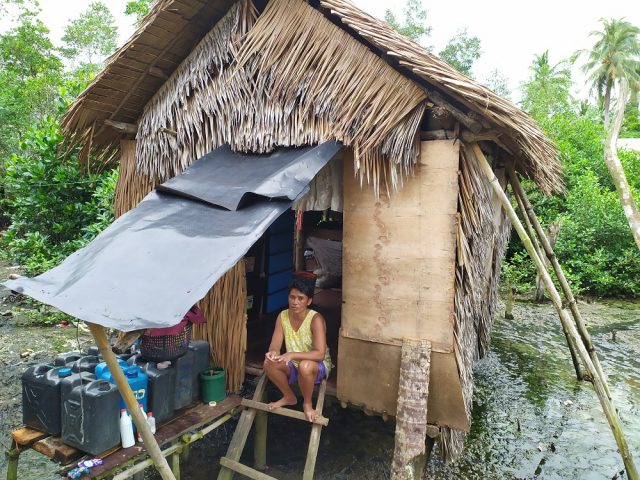
The majority of the people of Samar Island are farmers or fishermen.
Each year, during the rainy season from November to March, Samar is the target of about fifteen typhoons, which often blow away houses, electrical installations and sections of the road in their path. Far from the main economic centres (Manila and Cebu), the residents are not waiting for any government or NGO assistance to start rebuilding. They use tarpaulin, rusty metal sheets and old planks to make a make-shift home.
In 2003, we became the first NGO to set up in Samar, which was shunned by tourists and other NGOs, in order to provide support to the local population by helping children to go to school.
However, it was not until 2013 that many NGOs from around the world came to the island after the damage caused by Super Typhoon Haiyan. With wind gusts of over three hundred kilometres per hour and waves over ten metres high, the damage to property and loss of life was significant. Two thousand deaths were officially recorded on the island of Samar, but the difficulties of communication and post-typhoon research lead us to believe that the number of victims was much higher.
Traumatised by this disaster, almost seven years later, the people are still talking about it with a lot of emotion and fear. Once the emergency aid was provided, the NGOs left a few months later. Only Children of the Mekong have continued to provide economical and psychological support to the population and especially to the sponsored children’s families after each typhoon.
Learn more about our privacy policy here.

Typhoons are part of life in Samar, and the people know how to react in case of an emergency. The traditional dwellings of the Filipinos are made from the leaves of Nipa Palm (Water Palm) which are dried out and thatched, providing only light protection from the wind. This is why the residents first strengthen their houses by wrapping them with ropes and bracing the outer walls with sticks. After having protected their property from water infiltration, they will get to a place of safety either in a barangay hall (the main community centre of their district) or with neighbours who have a solid house. Very religious, Filipinos pray during the typhoon and accept this brutality of the weather as a test of life, but always with great optimism.
Sometimes they will go out to inspect the damage by singing, to show their gratitude that friends and family are alive. Often, they won’t wait for any help before starting to rebuild their houses with the debris left from the previous one.
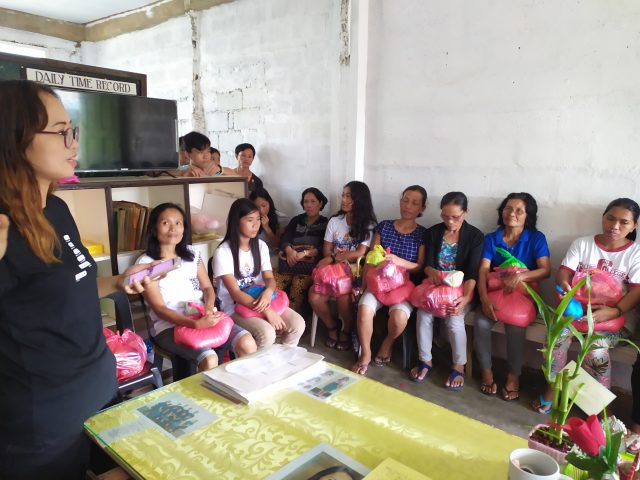
Distribution of food aid by a local manager to the sponsored children’s families.
This is why Children of the Mekong, which mainly works on schooling for children, are also worried about the environment where these children live and study. Therefore, following each devastating typhoon, the charity brings both emergency and longer-lasting materials and food aid, making it possible for them to rebuilding the houses of the sponsored children.
To do this, the local managers, supported by a volunteer, are visiting the sponsored children’s homes one by one in order to provide a personalised assessment of their needs in a realistic and fairway. They work closely with the families to identify the damage and their needs.
The month of December 2019 was marked by two devastating typhoons: a category 3 typhoon (Typhoon Kammuri) and a category 2 typhoon (Typhoon Phanfone), hitting the whole Samar Island together. They left behind destroyed homes, collapsed sections of roads and residences without electricity for several weeks after.
Mercy, a child sponsored by Children of the Mekong who lives on Biri Island (situated to the North of Samar Island), tells us her story:
“My father died last year. This is the first year that my family have had to deal with a typhoon without his help so it has been very difficult. Luckily neighbours have helped us through it all. But above all, I am very grateful for the help of Children of the Mekong, because without them we wouldn’t have had the money to repair the roof. As we live on a small island, the corrugated metal is more expensive as it’s all imported.”
It takes several months and sometimes even years, despite the help of Children of the Mekong, before the houses are fixed and the traces of the typhoon are erased. Despite these natural disasters and the poverty that remains on the island of Samar, the residents show a great deal of solidarity and unfailing strength.
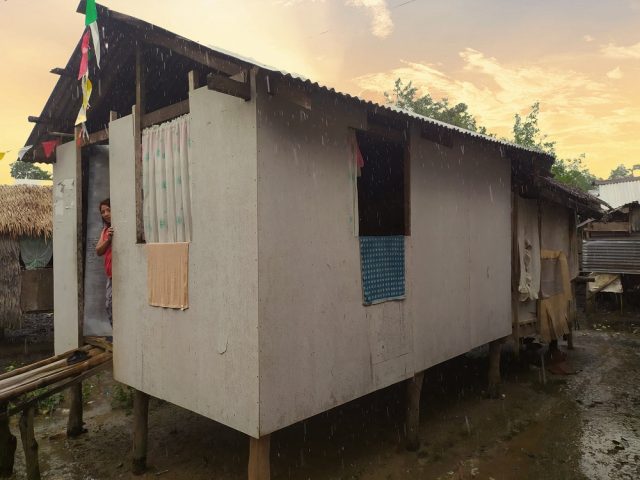
Reconstruction of a house by Children of the Mekong after the typhoon Kammuri.
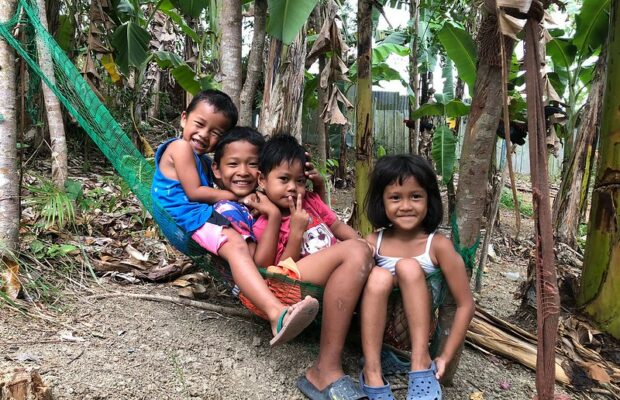
In the mountains of Cebu, child sponsorship has the power to send children to school safely and encourage them to chase their dreams.
Sponsored children: 0 of 13
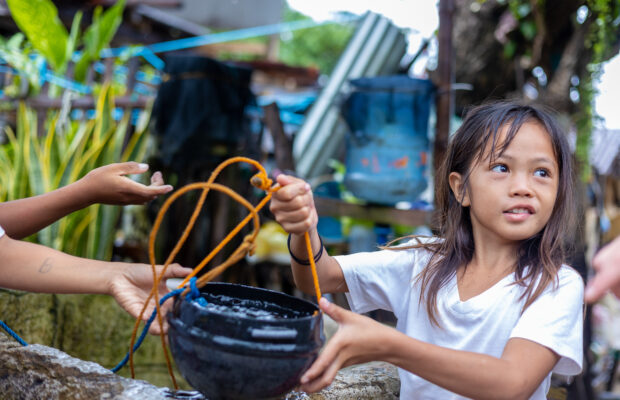
In the small town of Liboro, Philippines, sponsorship has the possibility of transforming the lives of young people by sending them to school.
Sponsored children: 11 of 13
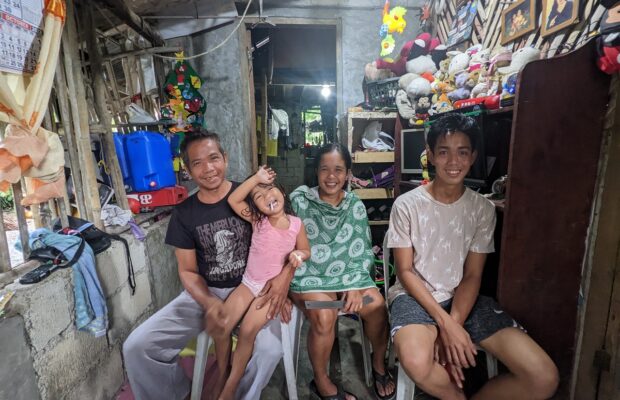
In this isolated region in the north of the country, it is difficult if not impossible for the poorest families to send their children […]
Sponsored children: 14 of 15
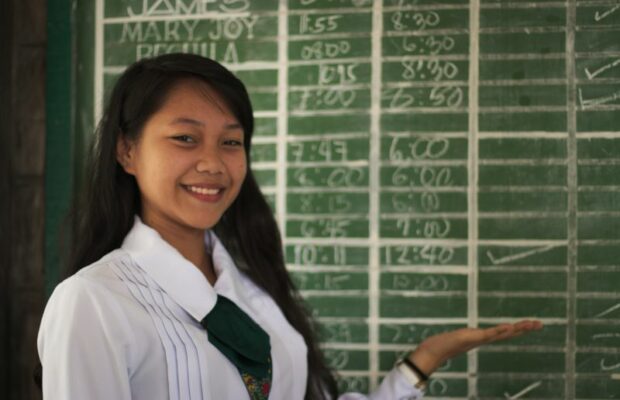
Urban poverty is appalling in the Philippines. Sponsor a child today and give them the chance to get out of poverty thanks to the […]